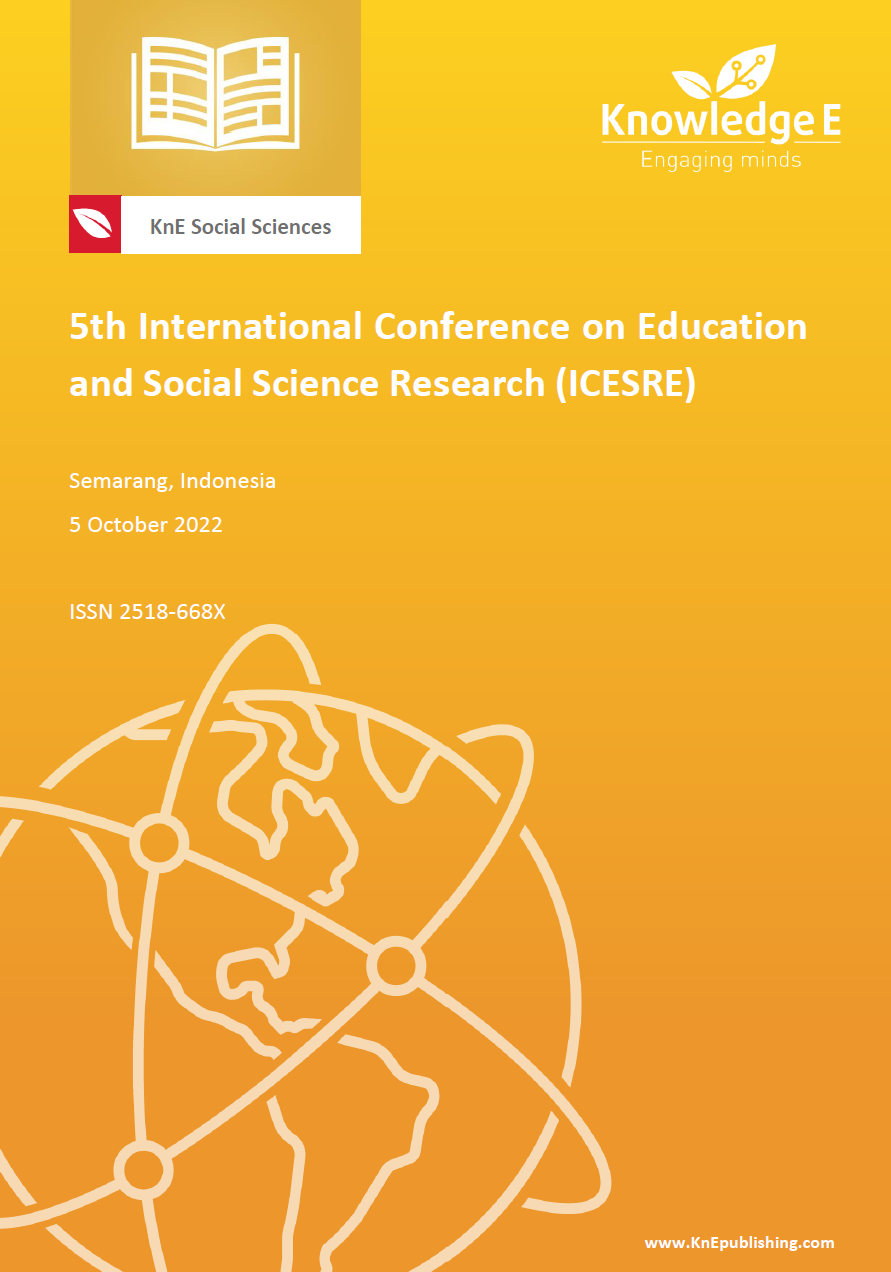Development of Electric Cube Assistive Technology to Facilitate Physical Fitness Trainings of Children With Special Needs
DOI:
https://doi.org/10.18502/kss.v7i19.12475Abstract
Assistive technology has opened many doors of education for special needs students. Assistive technology can be an equalizer for individuals with special needs to be able to participate in the school and community environment. This study aimed to research and develop assistive technology that can facilitate special needs children to be able to do physical activities like physical fitness exercises. The final product of this study is a smart cube equipped with a timer and a special fitness training program that is integrated into the smartphone. The research method used in this study was research and development adopted from Borg and Gall, divided into three stages. The design stage, the development stage, and the implementation stage. The research subjects consisted of experts in adaptive physical education, physical activity instructors for students with disabilities, and students with disabilities. Data was collected using the test method (physical fitness movement literacy) and non-test methods (survey, test, observation, interview and documentation). The results of the small group and large group try out stated that the product can be implemented well, and by looking at the results of the research, it can be concluded that the product is suitable to use by children with special needs, especially children with mild mental disabilities.
Keywords: Assistive device, Electric cube, Physical fitness, Special needs children
References
[2] Technology A, Opportunities C. Assistive technology for children with disabilities: Creating opportunities for education, inclusion and participation: A discussion paper. WHO. 2015;34.
[3] Laughlin MK, Murata NM, Gonnelli M, Larranaga J. Assistive technology: What physical educators need to know. Journal of Physical Education, Recreation & Dance. 2018;89:38–45.
[4] Beigel AR. Assistive technology assessment: More than the device. Intervention in School and Clinic. 2000;35:237–243.
[5] P Akpan J, A Beard L. Overview of assistive technology possibilities for teachers to enhance academic outcomes of all students. Universal Journal of Educational Research. 2013;1:113–118.
[6] Kärnä-Lin E, Pihlainen-Bednarik K, Sutinen E, Virnes M. Technology in Finnish special education – Toward inclusion and harmonized school days. Informatics in Education. 2007;6:103–114.
[7] Alammary J, Al-Haiki F, Al-Muqahwi K. The impact of assistive technology on down syndrome students in Kingdom of Bahrain. Turkish Online Journal of Educational Technology. 2017;2017:759–778.
[8] Edyburn DL. Assistive technology and students with mild disabilities. Focus Except Child. 2017;32.
[9] Borg J, Lindström A, Larsson S. Assistive technology in developing countries: A review from the perspective of the Convention on the Rights of Persons with Disabilities. Prosthetics and Orthotics International. 2011;35:20–29.
[10] Wehmeyer ML, Smith SJ, Palmer SB, Davies DK. Technology use by students with intellectual disabilities: An overview. Journal of Special Education Technology. 2004;19:7–21.
[11] Michaels CA, McDermott J. Assistive technology integration in special education teacher preparation: Program coordinators’ perceptions of current attainment and importance. Journal of Science Education and Technology. 2003;18:29–44.
[12] Edyburn DL, Smith RO. Creating an assistive technology outcomes measurement system: Validating the components. Assistive Technology Outcomes and Benefits. 2004;1:8–15.

